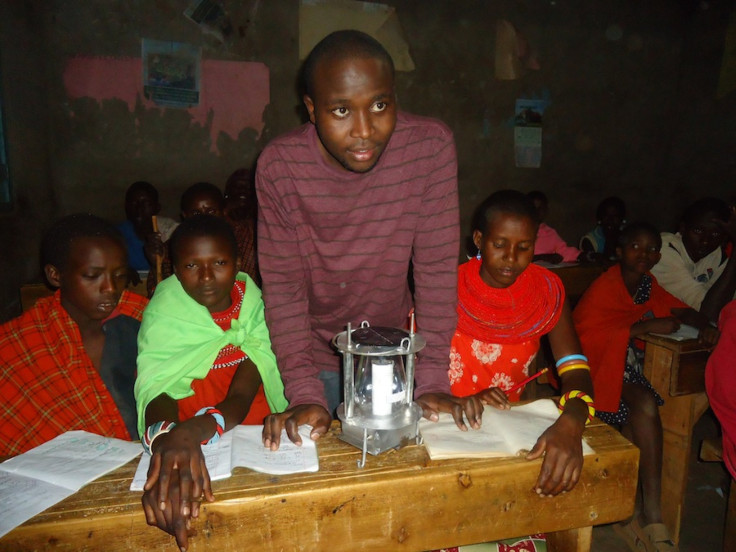Kenyan Entrepreneur Fights Poverty, Shines Light On The New York City Art Scene

What does a rural village in the East African country of Kenya have in common with a trendy art gallery in New York City’s Chelsea neighborhood?
Not much, on the face of things. But this week, both will be radiant with the blue-ish glow of some funny-looking little lanterns.
This is the work of Evans Wadongo, 27, a Kenyan engineer and the executive director of Sustainable Development for All, or SDFA. As a university student in 2004, Wadongo designed a lamp that would eventually be distributed across Kenya to help bring light -- and hope -- to villages plagued by poverty.
The term MwangaBora, which means "good light" in Swahili, has come to describe these little beacons.
This week, the Friedman Benta gallery in Chelsea is exhibiting an installation featuring 1,000 of these lanterns, specially crafted as collectors’ editions for the event. Proceeds from the sales will help SDFA to build and distribute 20,000 more MwangaBora lanterns for poverty-stricken Kenyan communities.
“We are using the lamps to put women and children in power,” said Wadongo to the International Business Times. “They can save money and use those savings to create small businesses.”
That may sound like a tall order for a light fixture, but these lanterns are designed to address some very specific problems. They feature LED bulbs and are made from 50 percent recycled materials. They are also solar-powered, and they can shine on past sunset without the use of kerosene.

Wadongo grew up in a rural village in western Kenya where resources were scarce. His parents encouraged him to pursue an education, so he often stayed up past sunset to study his school textbooks. That had him leaning over a kerosene lamp so frequently that he incurred permanent eye damage -- and it had his parents paying the recurring costs of kerosene fuel.
Luckily, it paid off. Wadongo’s education enabled him to design his lamp in 2004; he joined SDFA a few years later and soon became executive director.
Today, SDFA’s lantern manufacturing and distribution efforts are sustained in part by grants and fundraisers, like the one taking place in New York City this week. Wadongo says his ultimate goal is to help lift families and communities out of poverty; he has turned down opportunities to spin his idea for a big profit.
“As people see the results, it’s becoming easier for people to understand our model,” Wadongo said. “It’s a really effective way to help people who don’t have any money, but want to improve their lives.”
Over the long term, the donated lights actually create paying customers in Kenya. Wadongo explains that families who spend less on kerosene or firewood can put money toward investments -- anything from school fees to farming tools to community projects -- and escape a cycle of poverty.
“That puts people in a position to pay for extra lamps for the community,” Wadongo said.
The story of MwangaBora made waves around the world, catching the attention of some influential people. This week, Wadongo is teaming up with none other than Reed Krakoff, fashion mogul and president of Coach (NYSE: COH), who designed the exhibition at Friedman Benda. The MwangaBora exhibit runs April 17-19 and will have a public opening reception Thursday, April 18, from 6 p.m. to 8 p.m. Fans of SDFA’s work can also purchase a lamp or donate to the organization by visiting www.villagevolunteers.org/donate.
© Copyright IBTimes 2025. All rights reserved.






















